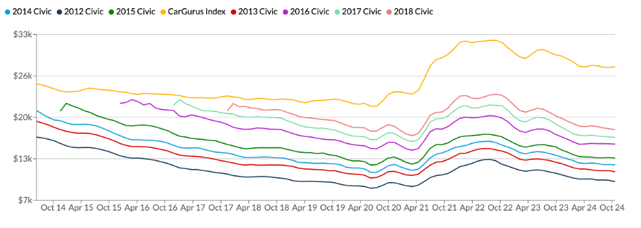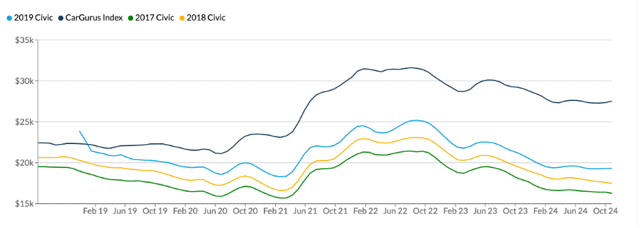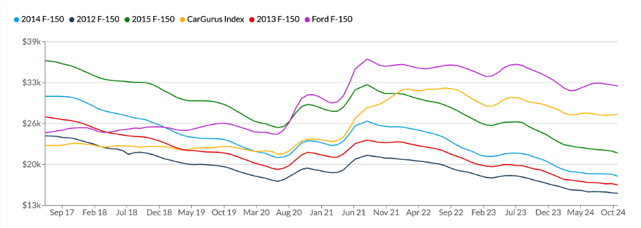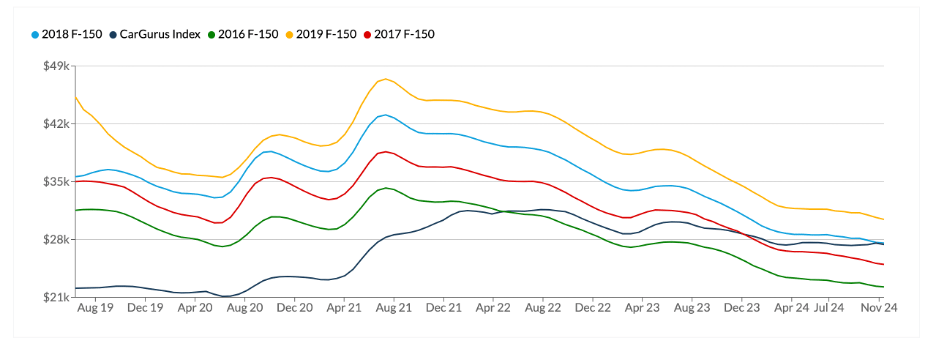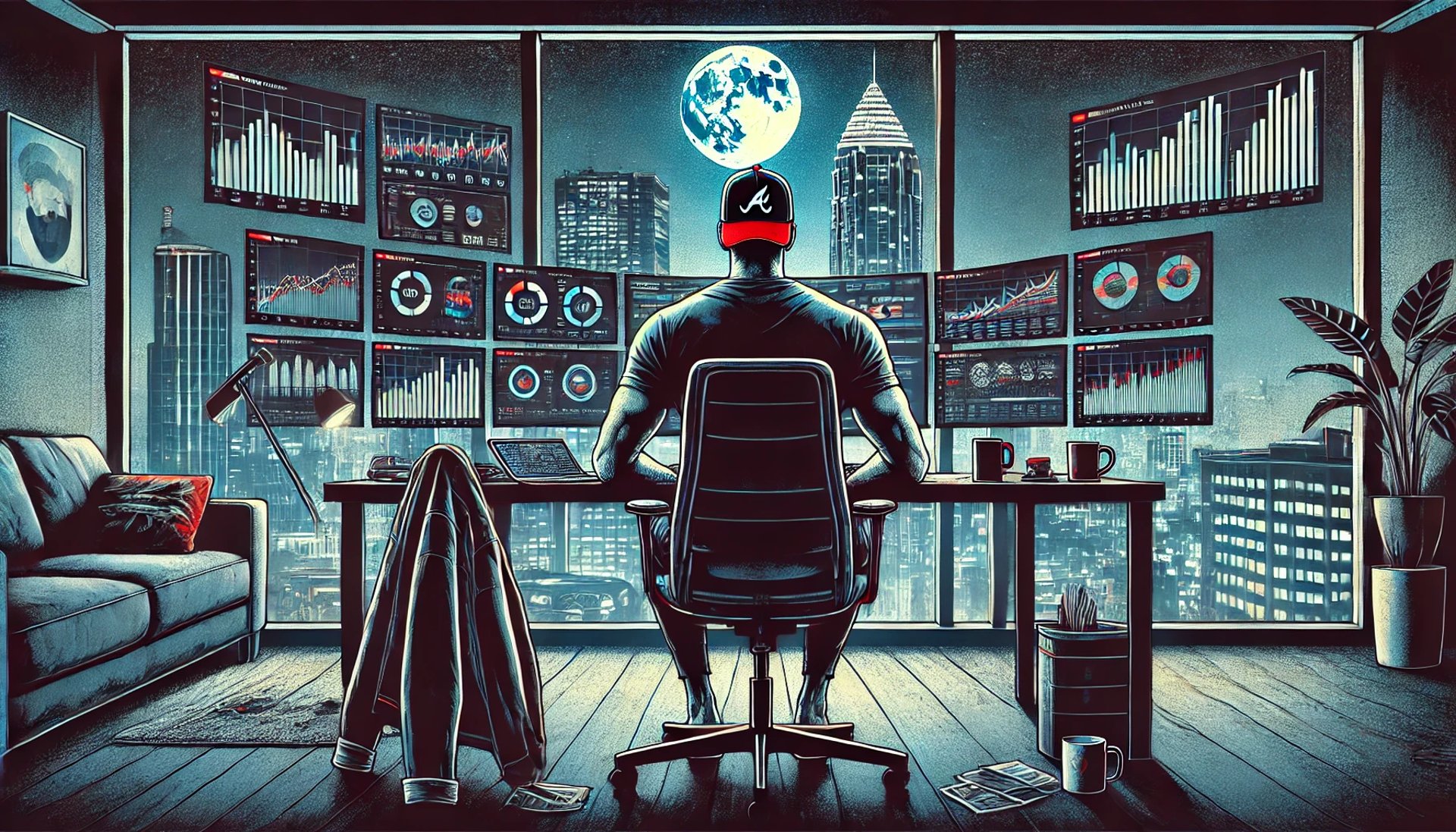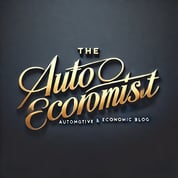Why the ‘Falling’ Used Car Price Narrative is Completely Out of Touch
Let’s get one thing straight: used car prices are not dropping, no matter what the analysts want you to believe. Sure, they’re pushing the narrative that we’re in some magical period of “cooling” prices, but here in the real world, costs are still sky-high. Five years of relentless supply chain chaos, a chip shortage, and production halts have squeezed the auto market dry, and now even high-mileage beaters are commanding top dollar. If you’re waiting for a price drop miracle, keep dreaming—this market isn’t cooling down anytime soon, and anyone claiming otherwise is only looking at half the story.

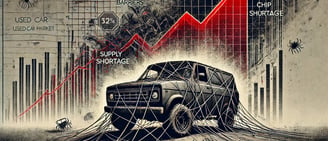
Alright, folks, let’s set the record straight: used car prices are not truly down. Sure, every automotive analyst and their second cousin’s podcast is out here claiming that prices are “falling” as if we’re about to walk into some golden era of affordable cars. They’ll wave around some “data” on how prices are finally cooling, but let’s be real—most of these people wouldn’t know a supply shock if it drove over their foot. Used car prices are still at record highs, and it’s not some passing trend. It’s the result of five years of bad breaks, one after another, hammering the auto market. And if you don’t believe it, buckle up and let’s take a trip down memory lane.
The Domino Effect: The Supply Chain Mess that Keeps on Giving
Want the real reason used car prices are high? It’s not because the market just “bounced back” after the pandemic. No, we’re here because of five years of absolute chaos that took the auto industry to its knees. Let’s start with the semiconductor shortage—remember that? When chips became harder to find than a parking spot in Manhattan? Car production tanked because modern vehicles need chips for everything from engine management to infotainment. This isn’t just a minor inconvenience; the chip shortage left factories idling and car dealerships with empty lots. Still think prices are down? (source)
And let’s not forget COVID, the gift that keeps on giving. Factories shut down, workers were sent home, supply chains were backed up from here to Shanghai. Shipping, freight, and logistics all took a hit, and the entire global supply chain was brought to a standstill. When things finally started rolling again, demand had skyrocketed, but inventories were bone dry. So, what happened? New car buyers were priced out or left waiting, and everyone flooded the used car market instead. Voilà—sky-high used car prices.
So, Who Are These “Experts” Anyway?
Let’s talk about today’s so-called automotive analysts. I’ve spent years in this business—sat in OEM planning meetings, worked with suppliers, and actually seen how production and pricing decisions play out in real time. But most of these “experts” telling you used car prices are falling? Try Googling their names and pulling up their LinkedIn profiles. Any experience at an OEM, supplier, or dealer? Probably not. A quick stint at the sorority before they put that English major to use, for sure.
Here’s a tip, analysts: maybe get a little real-world experience before telling the public what to expect from the used car market. You don’t know how long these waves ripple out if you’ve never seen the boulder dropped in the first place. The difference between someone who’s worked in the industry and someone who’s just skimming charts is as clear as night and day
The Used Car Ripple: Look Beyond The Big Splash Made By The Boulder
You can think of the last five years as a boulder crashing into a lake. Sure, you can see a few waves here and there, but those ripples keep spreading. And if you’re only watching the last little ripple, you’re missing the big picture. Because of COVID and the chip crisis, the production of new vehicles was drastically reduced. Guess what that meant for used cars? Fewer trade-ins, fewer lease returns, and a squeezed inventory across the board.
And here’s the kicker: by 2019, ten-year-old cars were already priced at historic highs, thanks to the 2008 recession when production nearly stopped. Those older models are getting scrapped faster than they can be replaced. In other words, this shortage isn’t new. It’s been building, wave after wave, for years. These analysts crowing about the “price drop” from pandemic highs need to look beyond their two-year “trend.” But most of them wouldn’t know real market cycles if it bit them.
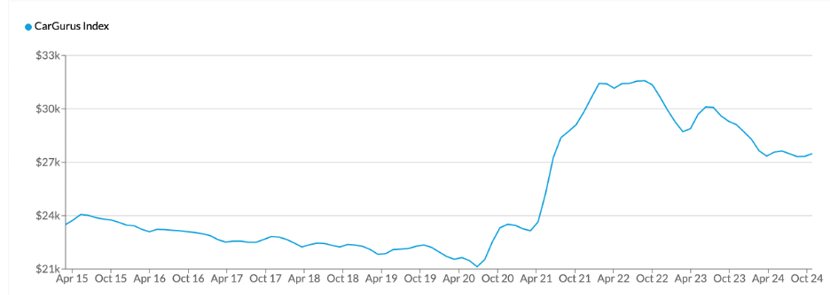

The “Price Drop” Myth: Civics, F-150s, and the Real Numbers
Alright, let’s get specific. Take a Honda Civic, one of the most popular cars in the U.S. In 2014, they sold 325,000 units, and by 2020, a used 2014 Civic was priced around $10,900. Fast-forward to 2024, and now, that same Civic—with more miles, more wear—is going for $12,040. That’s a 20% increase in value. Tell me, how are prices “down” when a car that’s four years older and has double the mileage is still priced higher? (source)
And it’s the same story with trucks. The Ford F-150—America’s top truck—hasn’t exactly become affordable overnight. Look at models from 2012-2015, and you’ll see that the prices remain high. Why? Because people want them, and the market isn’t exactly swimming in supply. Go on CarGurus, check out the numbers for yourself. Trucks are holding steady, even for models that should have depreciated by now.
The Bottom Line: Don’t Buy the “Price Drop” Hype
Here’s the truth: a minor drop from pandemic highs doesn’t mean prices are down. We’re still sitting at historic levels for used cars, and until the auto industry can catch up on production, that’s not changing. Anyone telling you differently is probably the same person who thought supply chains would fix themselves overnight. Newsflash—they haven’t, and they won’t anytime soon.
So if you’re waiting for used car prices to go back to pre-pandemic levels, don’t hold your breath. This market isn’t “down” just because there’s been a slight dip since 2021. The big picture is clear: prices are staying high, and they’ll keep pushing upward until the industry gets back on track—which, given the last five years, could be a long time coming.
And as for the analysts who tell you otherwise? Well, maybe they should spend a little less time on social media and a little more time understanding how markets actually work.
